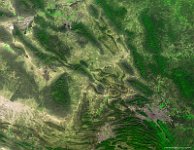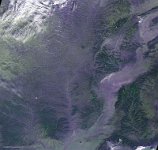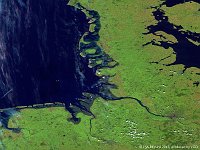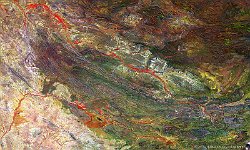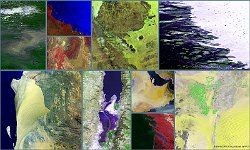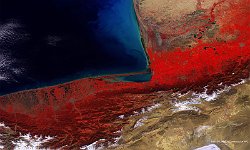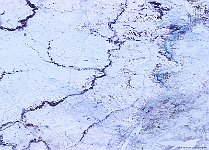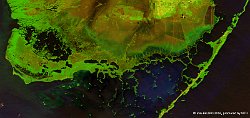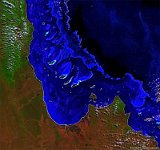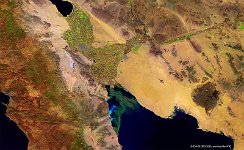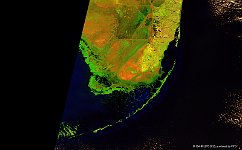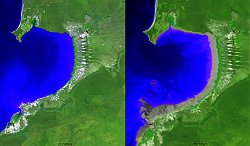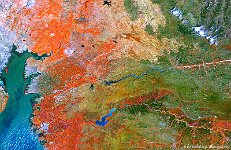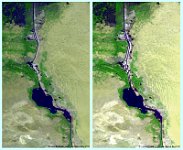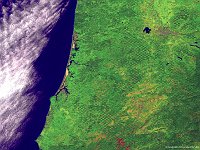51 / 84
Caspian Sea, Iran-Turkmenistan
PROBA-V observations are increasingly used for water quality applications, such as information on chlorophyll concentration and water-suspended materials. The 100 m false-colour image of 8 March 2016 shows a potential application, with high Atrak river sediment concentrations that can be recognised by light-blue taints along the south-eastern Caspian coast.
Further, the lower image part shows snow-covered peaks from the Alborz mountain range, while in the lower-right corner the Haj Aligholi Salt Lake is partly visible in white.
Date: 08/03/2016
Resolution: 100m
